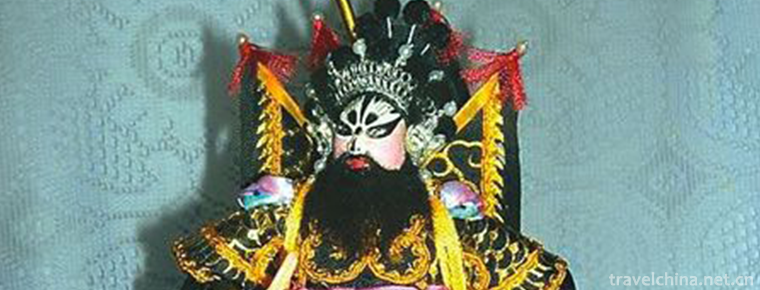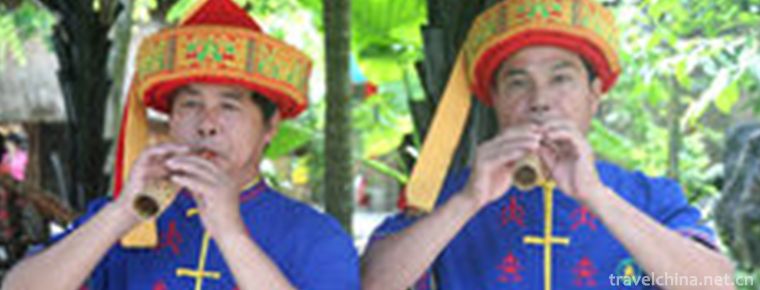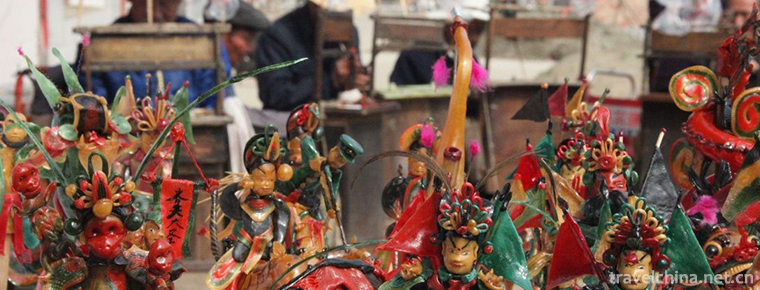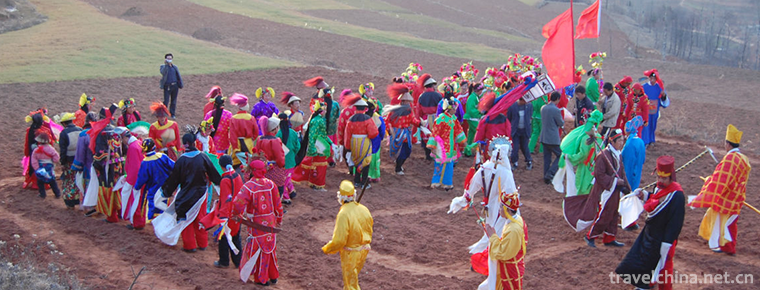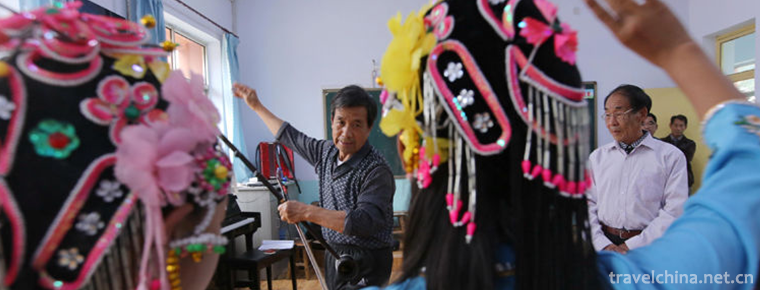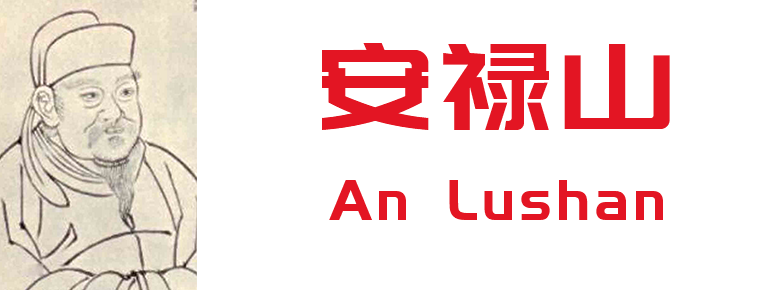Smelting Technology of Gold Chute Stone fill Stove
Smelting Technology of Gold Chute Stone-fill Stove
The smelting technique of gold chute rockfill stove was first seen in the history of Song Dynasty. Since the fourth year of Jingde in the Song Dynasty, Minister Pan Mei-lai adopted this method to supervise Linglong Gold Mine, the first official gold mine in China, this technique has been written into the History of Song Dynasty. After many dynasties, the inheritance has been flourishing, and its principle is still applied today. To this day, Zhaoyuan's goldsmiths who master this skill can trace their genealogy back to seven generations. The smelting technology of gold chute rockfill stove consists of four processes: crushing, grinding, drawing and smelting. Crushing: commonly known as sand breaking, ore should be crushed to the same size as peanuts. Grinding: Crushed ore should be milled after mixing with clean water evenly. The finer the sand grinding, the better, because it determines the level of ore dressing rate in the future.
In 2008, it was selected as the second batch of national intangible cultural heritage list.
Technical history
According to the burning remnants found in ancient pits in Zhaoyuan and the remains of gold mining by the ancestors such as charcoal, iron chisel, hammer, clay bowl and black pottery bowl, the original burnt-fired blasting method was used to extract gold in Zhaoyuan during the Spring and Autumn Period and the Warring States Period. The record of the smelting technique of the gold chute stone stove was first seen in the history of Song Dynasty, and Zhu Biao's Pingzhou Ketan Volume 2 of Song Dynasty recorded: "The metallurgy of the two states, taking sand along the stream and scouring it with wooden trays, is very little and laborious. Denglai gold pit households only use big wood, sawing it, leaving blade marks, throwing sand on it, flooding with water, sand, gold saw grain, very easy to get. This traditional technique of mining gold by hand-operated crushing, grinding, drawing and smelting with hammer, mortar, stone mill, stone mill, chute, Taozun (or crucible) and other advanced tools was later called "chute stove smelting method" by gold historians. In fact, it is the method of extracting gold by gravity beneficiation and high temperature smelting.
Craft procedure
Since the fourth year of Jingde in the Song Dynasty, Minister Pan Mei-lai adopted this method to supervise Linglong Gold Mine, the first official gold mine in China, this technique has been written into the History of Song Dynasty. . To this day, Zhaoyuan's goldsmiths who master this skill can trace their genealogy back to seven generations. The smelting technology of gold chute rockfill stove consists of four processes: crushing, grinding, drawing and smelting. Crushing: commonly known as sand breaking, the ore should be crushed to the same size as peanut rice. Grinding: Crushed ore should be milled after mixing with clean water evenly. The finer the sand grinding, the better, because it determines the level of ore dressing rate in the future. When pushing and grinding, people often sing while pushing in order to forget their hard work and reach the same pace. The simple song is not only full of gold miners'yearning for a better life, but also inherits the local folk culture. Beneficiation: commonly known as "pull flow". The concentrate, which is called gold mud, is selected mainly by gravity principle. This process has relatively high technical content and is relatively complex, and it is the key link of the whole process. When drawing, the ground ore powder is placed above the trough plate and evenly spread out to draw a ditch. When the water in the cylinder above the chute plate enters, the water flow should be controlled by gentle stroke or tapping with a uniform chop from left to right. This is the key to pulling flow, because the flow is large, it is easy to wash away the gold-bearing particles; the flow is small, but it can not wash away the slag, which can not meet the requirements of mineral processing. With the clear water flowing away, the stone slag leaves behind gold-bearing mineral particles, commonly known as "gold mud". After the pull-out, the gold mud is filled in a mud bowl, then dried with fire, and then the rabbit legs which can not adhere to the gold particles are used to clean the gold mud onto the paper, wrapped in paper bags and stored for refining. Smelting: commonly known as "chemical fire". When igniting, paper bags containing gold mud are put into crucibles which are determined to be free of cracks for smelting. After the gold mud is melted, the foam formed by impurities is continuously evaporated or extracted with iron pincers, and then the gold is purified by adding mirabilite and borax. When the molten gold is purified to a certain extent, it is poured into the gold mould, and the gold smelting is completed. The whole process is mastered by the experience and feeling of the goldsmith. The smelting technology of gold chute rockfill stove is not only inseparable from Zhaoyuan's gold mining history, but also occupies an important position in China's gold production history. It is this handicraft handicraft handicraft handicraft handed down from generation to generation that has laid a solid foundation for modern gold mining technology and promoted the development of gold industry.

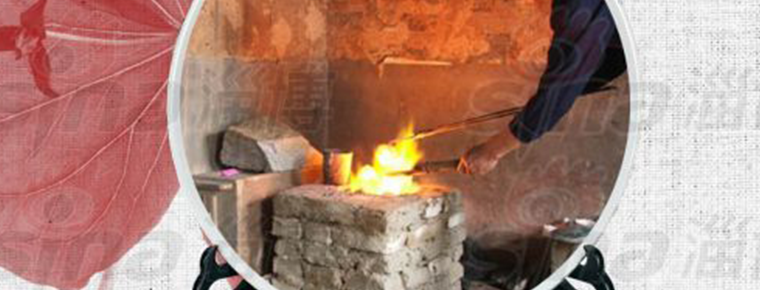
-
Color tie
Color tie Coloured tie is also called paper tie and silk tie. It is a kind of simulation art of Chinese traditional folk crafts, and also a comprehensive handicraft..
Views: 332 Time 2019-04-04 -
Li Folk Songs
Folk songs play an important role in daily life. Almost all men, women and children can sing. Especially on festive days, singing is an indispensable recreational activity. In the daily production wor.
Views: 307 Time 2019-05-12 -
Sugar plastic
Sugar sculpture, one of the traditional folk handicraft products, commonly known as sugar blowing, sugar manikin, engaged in this trade called sugar blowing people, throughout the country, especially .
Views: 359 Time 2019-06-18 -
Wudu Alpine Opera
Wudu Alpine Opera, also known as Alpine Opera, is one of the two unique local operas in Gansu Province. In 2008, Wudu Alpine Opera was selected as the second batch of national intangible cultural heri.
Views: 168 Time 2019-06-30 -
King Yalu
King Yalu is the first long Miao heroic epic in history. It is usually chanted at the Miao spiritual ceremony. It is only handed down orally and has no written record. The history of the Miao people's.
Views: 145 Time 2019-07-10 -
Parrot Opera
Parrot Opera, which originated in the reign of Qianlong in Qing Dynasty, inherited in Shanghe Village, Linzi District, Zibo City, Shandong Province, and is one of the national intangible cultural heri.
Views: 141 Time 2019-07-25 -
Beijing Sport Univerrsity
Beijing Sports University was founded in 1953, formerly known as the Central College of Physical Education, renamed Beijing Sports College in 1956 and Beijing Sports University in 1993. It is a nation.
Views: 174 Time 2019-09-06 -
An Lushan
An Lushan (703 to 757 years). Yingzhou (today's Liaoning Chaoyang) Kang Name Rolling hill 。 His father may be kang Hu people Mother A Stead S is a the turks Witch. According to legend, his mother did .
Views: 247 Time 2019-09-11 -
Jinhua Alsophila Nature Reserve
Jinhua Alsophila spinulosa nature reserve is a provincial nature reserve approved by Sichuan Provincial People's Government in 1987. In sifangjinggou, Jinhua Township, 48 kilometers southwest of Rongxian City.
Views: 155 Time 2020-10-15 -
Rongxian Giant Buddha
Located in the eastern suburb of Rongxian County, Sichuan Province, the Giant Buddha of Rongxian county is carved in the Tang Dynasty. It is a cliff carved statue of Sakyamuni, 36.67 meters high, 8.76 meters long, 12.67 meters wide, 12 meters high and 3.5 meters wide. It is the world's largest Sakyamuni Buddha (Modern Buddha)..
Views: 329 Time 2020-10-15 -
Location of Meishan
Meishan is located in the southwest of Chengdu Plain and the middle reaches of Minjiang River in Sichuan Basin. It spans 29 ° 24 ′ - 30 ° 16 ′ N and 102 ° 49 ′ - 104 ° 30 ′ e. it is 150 km long from east to west and 72 km wide from south to north. It connects Chengdu,.
Views: 353 Time 2020-12-18

